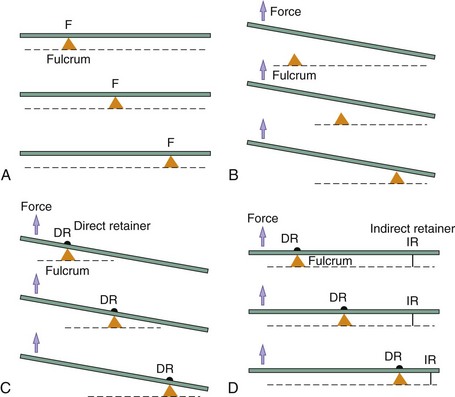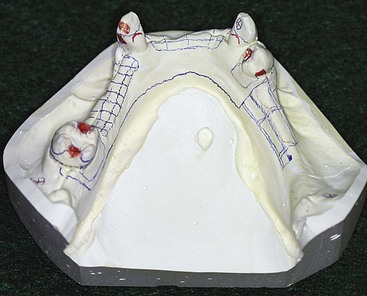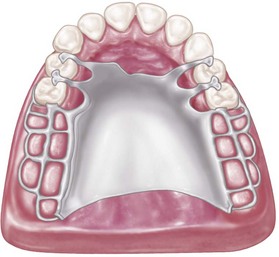CHAPTER 8 Indirect Retainers
Role of Indirect Retainers in Control of Prosthesis Movement
As was described in Chapter 4, partial denture movement can exist in three planes. Tooth-supported partial dentures effectively use teeth to control movement away from the tissues. Tooth-tissue–supported partial dentures do not have this capability because one end of the prosthesis is free to move away from the tissue. This may occur because of the effects of gravity in the maxillary arch or adhesive foods in either arch. Attention to the details of design and location of partial denture component parts in control of functional movement is the strategy used in partial denture design.
When the distal extension denture base is dislodged from its basal seat, it tends to rotate around the fulcrum lines. Theoretically, this movement away from the tissues can be resisted by activation of the direct retainer, the stabilizing components of the clasp assembly, and the rigid components of the partial denture framework, which are located on definite rests on the opposite side of the fulcrum line away from the distal extension base. These components are referred to as indirect retainers (Figures 8-1 and 8-2). Indirect retainer components should be placed as far as possible from the distal extension base, which provides the best leverage advantage against dislodgment (Figure 8-3).
An indirect retainer consists of one or more rests and the supporting minor connectors (Figures 8-4 and 8-5). The proximal plates, adjacent to the edentulous areas, also provide indirect retention. Although it is customary to identify the entire assembly as the indirect retainer, it should be remembered that the rest is actually the indirect retainer united to the major connector by a minor connector. This is noted to avoid interpretation of any contact with tooth inclines as part of the indirect retainer. An indirect retainer should be placed as far from the distal extension base as possible in a prepared rest seat on a tooth capable of supporting its function.
Stay updated, free dental videos. Join our Telegram channel

VIDEdental - Online dental courses







